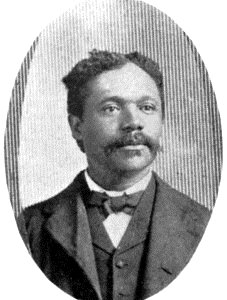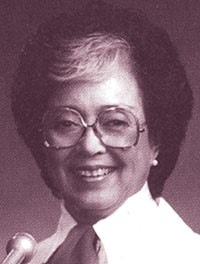On behalf of the firm, the Diversity and Inclusion committee, would like to share with you some history about Black History Month and notable African Americans who have contributed to the legal profession in the very states that our firm serves.
Black history month started more than 100 years ago in 1915 in Chicago, Illinois. During the summer, many African Americans traveled to Chicago to participate in a celebration of the emancipation of black Americans. Carter G. Woodson, after attending the celebration, decided to form an organization to promote the scientific study of black life and history. The Association for the Study of Negro Life and History was formed. Woodson had hoped to explore and promote the achievements of black Americans that were discovered. The achievements would be published in The Journal of Negro History, established in 1916. Woodson said, “We are going back to that beautiful history and it is going to inspire us to greater achievements.”
(https://asalh.org/about-us/origins-of-black-history-month/)
In 1926, Negro History Week was formed. February was chosen for reasons of tradition and reform, encompassing a month that contained the birthdays of Abraham Lincoln and Frederick Douglas, who played prominent roles in shaping black history. He wanted to empower and invoke the study and celebration of the black race. Rather than focusing on two men, the black community, he believed, should focus on the countless black men and women who had contributed to the advancement of human civilization. Black History Month was first proposed by black educators and the Black United Students at Kent State University in February 1969. The first celebration of Black History Month took place at Kent State one year later, from January 2 to February 28, 1970. In 1976, fifty years after the first celebration, the Association used its influence to institutionalize the shifts from a week to a month and from Negro history to black history. Since the mid-1970’s, every American president, Democrat and Republican, has issued proclamations endorsing the Association’s annual theme.
Today, more than 115 years later, we continue to celebrate the contributions that black Americans have made to American history.
There are some notable African Americans in the law in some of the states our firm is located in:
Leander Shaw was born in Salem, Va. He began to practice law in Florida at a time when the state was still segregated. When he took the Florida bar exam in 1960, he couldn’t stay in the same hotel where it was administered because it was for whites only. He was one of about 25 black lawyers in the state at the time. Leander Shaw was appointed to the court in 1983 by then-Gov. Bob Graham, and he retired in 2003, and served as chief justice from 1990 to 1992.
Judge Thomas Stringer, the first African American to graduate from Stetson University College of Law in 1974. After years of serving on the judiciary, Governor “Jeb” Bush appointed Judge Stringer to the Second District Court of Appeal in February 1999.
Honorable George Edgecomb, the Hillsborough County Courthouse bears the name of George Edgecomb. During his short career, Judge Edgecomb set an example as a dedicated professional and blazed trails as an African-American. He became the first African-American Assistant County Solicitor as well as the first African-American Assistant State Attorney, later becoming Chief of the Felony Division of the state attorney’s office. On August 13, 1973, Governor Reuben Askew appointed Judge Edgecomb as the first African-American county judge for Hillsborough County. He was just 31 years old when he took the bench, and served for just three years before his death in 1976.
Bette Wimbish, was a leading African-American woman activist who promoted the desegregation of schools and civil equality. She was many firsts. She was the first black female lawyer in Pinellas County, the first African American on the St. Petersburg, Florida City Council, and the first black person to hold modern elected office in the Tampa Bay area.
Fred G. Minnis, Sr. Born in 1912, Fred G. Minnis, Sr. began practicing law in St. Petersburg, Florida in 1956 and was often known as the “grandfather” of African-American lawyers in Pinellas County. Until he opened an office on 22nd Street S in late 1956, no black attorney had ever practiced law full time in Pinellas and in the beginning, it was difficult for him to attract business. Throughout his years as a pioneering attorney and community advocate, Mr. Minnis mentored and provided opportunities for clerkships to lawyers such as Frank Peterman, Sr. and James B. Sanderlin, Pinellas County’s first African-American judge.

Styles L. Hutchins was born November 21, 1852, in Lawrenceville, Georgia. He attended Atlanta University and after completing his studies, taught in local schools until 1871. In that year he became principal of Knox Institute in Athens, Georgia. In 1873 Hutchins left his position and moved to South Carolina, where he graduated from the University of South Carolina Law School in 1876. Admitted to the South Carolina bar at the end of the Reconstruction era, Hutchins first served as a Republican state judge, but the restoration of Democratic power led to his resignation. Hutchins returned to Georgia, fought for admission to the state bar in Atlanta, and after a six-month struggle he became the first African American attorney admitted to the Georgia bar. A certificate recognizing his status as an attorney and permitting him to plead cases in Georgia courts was issued January 28, 1878. Styles Hutchins became not only the first African American attorney admitted to the Georgia bar but also the first to plead a case before a judge in the state.
Honorable William H. Alexander was a Fulton County, GA Superior Court judge, state legislator, and civil rights attorney who successfully challenged segregation and discrimination. Born in Macon, Georgia, he graduated from Fort Valley State College in 1954. After serving in the Korean War, he earned a juris doctorate (J.D.) law degree from the University of Michigan and a master of laws (L.L.M.) degree from Georgetown University. He became a civil rights icon as the lead attorney in a case forcing the desegregation of the Pickrick restaurant owned by segregationist Georgia governor Lester Maddox. Other lawyers on his team included legal legends such as Constance Baker Motley and Burke Marshall. That victory set the precedent for the desegregation of all restaurants in the state.
James C. Napier , an African American businessman and leader was born to free parents on June 9, 1845, in Nashville. Between 1872 and 1913 Napier became Nashville’s most powerful and influential African American citizen. Between 1878 and 1886 he served on the Nashville City Council and was the first black to preside over the council. He was instrumental in the hiring of black teachers for the “colored” public schools during the 1870s, the hiring of black “detectives,” and the organization of the black fire-engine company during the 1880s. His greatest political accomplishment was his service as President William H. Taft’s Register of the United States Treasury from 1911 to 1913.
To learn more about the contributions of black Americans please consider the following links:
https://www.history.com/topics/black-history/black-history-facts
https://www.gabar.org/newsandpublications/announcement/Georgia-s-Black-Legal-Legends.cfm









